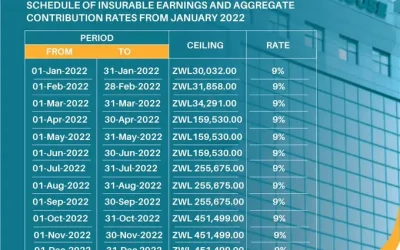Unpacking Key Highlights of 2023 Monetary Policy Statement (MPS).
The Bank, on the 2nd of February of 2023 presented the 2023 Monetary Policy Statement. The MPS was anchored with the motto ” Sustaining Price Stability and Economic Resilience”.The Bank maintained a tight monetary policy stance and adjusted policy rates to align them with positive inflation developments to consolidate and sustain the current price stability and resilience of the domestic economy.
Our aim is to focus on the major changes affecting your business operations and the one which have tax implication on your business.
Domestic Economic Conditions.
-
- Economic activity remains robust supported by strong foreign currency receipts, including diaspora remittances.
- Annual inflation is expected to continue declining underpinned by tight monetary conditions.
- Further liberalization of the FX market has helped anchor expectations.
- The BOP current account remains in a surplus position driven by robust export performance and remittances.
- The banking sector and national payments system remain safe and sound.
New Monetary Policy Measures.
The effective date of these measures is 1 February 2023.
-
Review of Interest rates
-
- Bank policy rate reduced from 200% to 150% per annum.
- The lending rate on the Medium-term Bank Accommodation (MBA) Facility for the productive sectors, including individuals and MSMEs, reduced from 100% per annum to 75% per annum.
- The prevailing Bank policy rate maintained as the minimum lending rate for all banks.
- Minimum deposit rates on savings and time deposits adjusted to 30% and 50% per annum, respectively.
- Minimum deposit interest rate on FCA savings and time deposits maintained at 1% and 2.5% per annum, respectively.
-
Review of Export and Domestic retention thresholds.
- Export retentions have been increased and standardised at 75% across all sectors, including firms listed on the Victoria Falls Stock Exchange (VFEX).
- The rates were reviewed from 60%. Thus firms were keeping 60% and RBZ retaining 40%
- Foreign currency retention on domestic sales in foreign currency has been increased to 85%.
- The rates were reviewed from 80%. That firms are keeping 85% and RBZ retaining 15%.
-
Further Liberalisation of the Foreign Exchange Market
- The Willing-Buyer Willing-Seller (WBWS) and the auction system will continue to complement each other.
- The WBWS continues to act as the interbank exchange rate.
- The WBWS to be strengthened and further liberalisation through FX sales to Banks and bureaux de change through auction on a wholesale basis.
- The auction system continues to act as a foreign currency re-distribution mechanism to gauge foreign currency demand in the economy.
- The limit for the WBWS will remain at US$100,000 per entity in line with the Foreign Exchange Auction System limits for secondary users.
Impact of the Monetary policy on your Business.
-
Positive impacts
- If you are into export business, now you can retain $0.75 per every dollar of export, from $0.60, thus 25% increment.
- You now suffer less RBZ retention of 25%, from previous 40%.
- For every transfer inflow or cash deposit , business now suffer 15% liquidation, 5% less from the previous of 20%
- in Finance terms you are 25% better off. It means you can import more if you are importing.
-
Adverse Impacts
- Though we appreciate the review of interest rates from 200% to 150% per annum, the rates are still high.
- This will lead to firms flocking to US Dollar financing.
- The rate of 150% per annum discourage business from borrowing thereby reducing economic growth.
- USDollar loans reinforces use of USDollar, thereby undermining our ZWL.
-
Tax Implications from Retention.
- Treatment of Retention when doing Financial Statements (Income Tax Return)
- The Finance Act [Chapter 23:04] is amended in section 4A (“Payment of certain taxes in foreign currency”) by the insertion of the following subsections after subsection
- (9)—
- “(10) Where any person liable to pay tax on income from trade or investment—
- (a) earns any part of such income in foreign currency; and
- (b) has any part of such income liquidated and paid in local currency upon transfer to a nostro account, pursuant to a retention scheme operated by the Reserve Bank of Zimbabwe;
- Treatment of Retention when doing Financial Statements (Income Tax Return)
any tax due on such part that is liquidated shall be calculated on the basis that it was earned in local currency.


